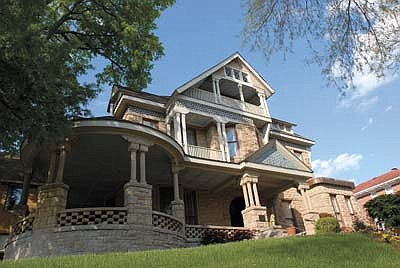More communities across Chattanooga are looking toward local historic designations as a way to increase value on property and keep the historical nature of the area intact, officials said.
"Several studies have shown that the importance of historic designations is seen through increased property values within district boundaries," said Jenny Shugart, the city's historic preservation planner.
Chattanooga has four local historic districts -- St. Elmo, Fort Wood, Battery Place and Ferger Place, Ms. Shugart said. The neighborhoods of Highland Park and Glenwood also are being considered for designation, she said.
With the local historic designation, each community agrees to write a set of guidelines, which sets standards on what type of building and renovation can take place within the community. The idea is to keep the historical integrity of the neighborhoods, she said.
"Guidelines can help address issues common to these old houses and buildings in order to keep the integrity and character of the property," Ms. Shugart said.
Ms. Shugart said the efforts to start local historic designations began in the 1980s.
One of the largest areas of historic preservation in the city is St. Elmo. Rebekah Marr, president of the Community Association of Historic St. Elmo, said the neighborhood received its historic designation in the 1990s.
The homes range from the 1880s to the 1930s, she said.
She said the community has a sense of pride in returning something to its roots as it was "starting to fade."
"There's a charm in a historical home," she said. "You have a sense of being part of something."
Emerson Burch, an owner of Artisan Homes, said his company has done work in St. Elmo and Highland Park. The company is renovating the old grocery store on St. Elmo Avenue to turn it into a workshop and gallery.
Many people in St. Elmo conduct work on their homes themselves, he said. What he wants to do is work on a few key homes and buildings to show how renovating a historical home can be done right, he said.
He said working on homes embedded in history is a job perk.
"That's where I enjoy my work," he said. "It's a labor of love."
He said those historical homes were built in a way that is almost an art form.
"It's the aesthetic of the home," he said. "It's the craftsmanship."
A TOWN AROUND A COURTHOUSE
The Rhea County Courthouse is the centerpiece for preservation and revitalization efforts in Dayton, Tenn., officials said. The courthouse took its place in history in 1925 with the Scopes Trial that focused on the theory of evolution. A few years ago, Dayton was awarded a portion of its sales tax by the state to use for revitalization and preservation, said Kerry Nabors, vice chairman of the MainStreet Dayton program. The city is using funds for streetscapes and a new entrance platform for the courthouse, he said. Mr. Nabors said the program is expected to generate about $1 million over eight years. City officials hope the revitalization efforts will inspire building owners to rejuvenate their properties.
PRESERVING CHICKAMAUGA
Chickamauga City Manager John Culpepper said preservation efforts in his small town, known for its Civil War history, started five years ago and have been very successful. The town is on the National Registry of Historic Places, and sites such as the Gordon Lee Mansion and Lee and Gordon's Mills are on the National Registry of Historic Buildings. The town added a streetscape and has made an effort to preserve its history, partly for economic development reasons, Mr. Culpepper said. "We have our own little niche in history with the Civil War. Every town has its niche."
